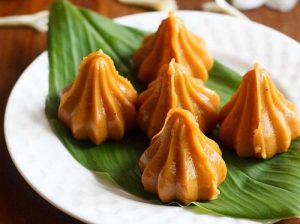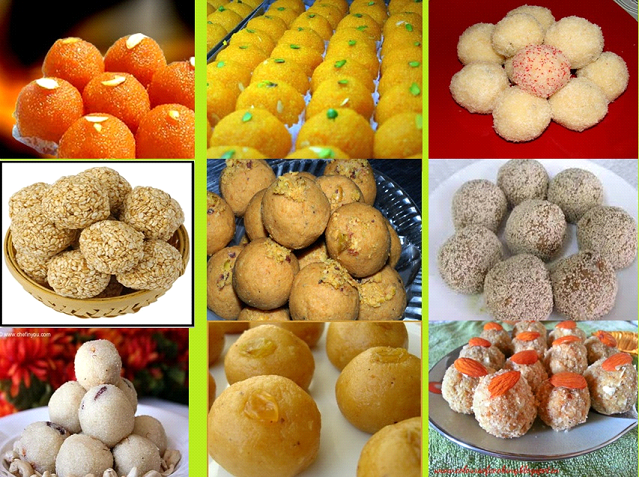The origin of laddu is steeped in antiquity. A story also goes that once a trainee assistant of a doctor, Vaid or Hakeem, as they were called, accidentally dropped ghee on to some mixture. He hastily made it into roundels to give the medicine as a dose. These were perhaps the earliest laddus. Lily tells us more about this Indian sweet, in the weekly column, exclusively for Different Truths.
laddus are the jewel in the crown of Indian sweets. Engagements, weddings, birth of children, promotions, you name it; they all call for a box of good old laddus!
laddus are also associated with the Hindu deity Lord Ganesha and now with the cartoon  character Chhota Bheem.
character Chhota Bheem.
The myriad array of images that this name conjures up are grandma’s Besan (gram flour) laddus, Motichoor, coconut, sesame seeds (Til), Tirupathi temple laddus, Kanpur’s Thhaggu ke laddu.
The genesis of laddu has never truly been authenticated even though it has graced festive and ceremonial occasions as well as adorned sweet shops with its showstopper good looks. A fine film of silver varq ornaments its golden orange globules.
Its origin is steeped in antiquity as sage-surgeons like Sushruta disguised the medicines in sweet roundels and gave it to their patients. The dosage could be easily determined too. Ancient Ayurvedic scriptures refer to sweet jaggery or honey covered rounds of fenugreek, sesame, carom, fennel, lotus seeds, peanuts and ginger powder too.
A story also goes that once a trainee assistant of a doctor, Vaid or Hakeem, as they were called, accidentally dropped ghee on to some mixture. He hastily made it into roundels to give the medicine as a dose. These were perhaps the earliest laddus.
 The Nariyal Nakrus or coconut laddus famous in the southern part of India were packed and given to soldiers and travellers on long journeys. They lasted kind and were nutritious.
The Nariyal Nakrus or coconut laddus famous in the southern part of India were packed and given to soldiers and travellers on long journeys. They lasted kind and were nutritious.
laddus were also supposed to bring good luck to warriors!
Even though most laddus varied in ingredients according to the locally available edible materials, the Persians brought the fancy items like figs, dates, dried fruit like cashew and almonds. Melon seeds called Magaz were also included by them.
Once the British came to our shores they added the ‘sweet white poison’ of sugar, instead of jaggery or honey. Calories increased as well as the sweetness quotient. There was also marked by the taste of laddus.
Lord Ganesha’s love for Modak the rice flour and sweetened coconut filled laddu is legendary. His  devotees win his heart by making this offering to the elephant-headed God. It is said Lord Krishna’s mother had once made an offering of Modaks for Ganesha. Knowing her son’s thieving ways, she tied Lord Krishna’s hands. It is believed that Ganesha did not like it. The idol came to life and fed the baby Krishna with its own trunk!
devotees win his heart by making this offering to the elephant-headed God. It is said Lord Krishna’s mother had once made an offering of Modaks for Ganesha. Knowing her son’s thieving ways, she tied Lord Krishna’s hands. It is believed that Ganesha did not like it. The idol came to life and fed the baby Krishna with its own trunk!
My son-in-law is from Kanpur swears by the Thhaggu ke laddu.
My personal favourite is the Bandar (port) laddu from Machhlipatnam in Andhra Pradesh.
Most Punjabis love Besan ke laddu or Motichoor laddu made with Besan ki Boondi!

©Lily Swarn
Photos from the Internet
#laddu #Sweet #IndianSweet #Dessert #FoodOfIndia #GodFood #TypeOfLaddus #HistoryOfLaddu #HistoryAndMystryOfFood #DifferentTruths







 By
By

